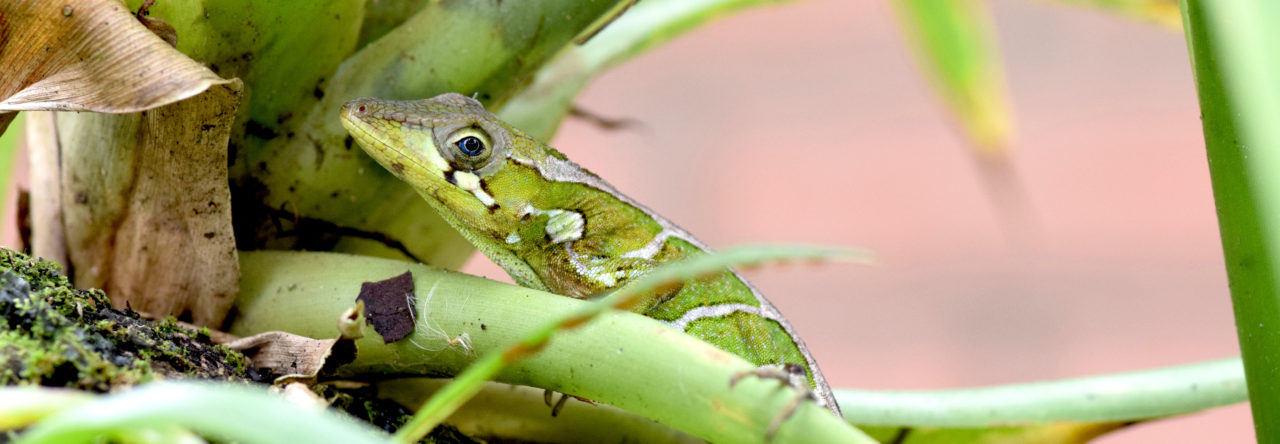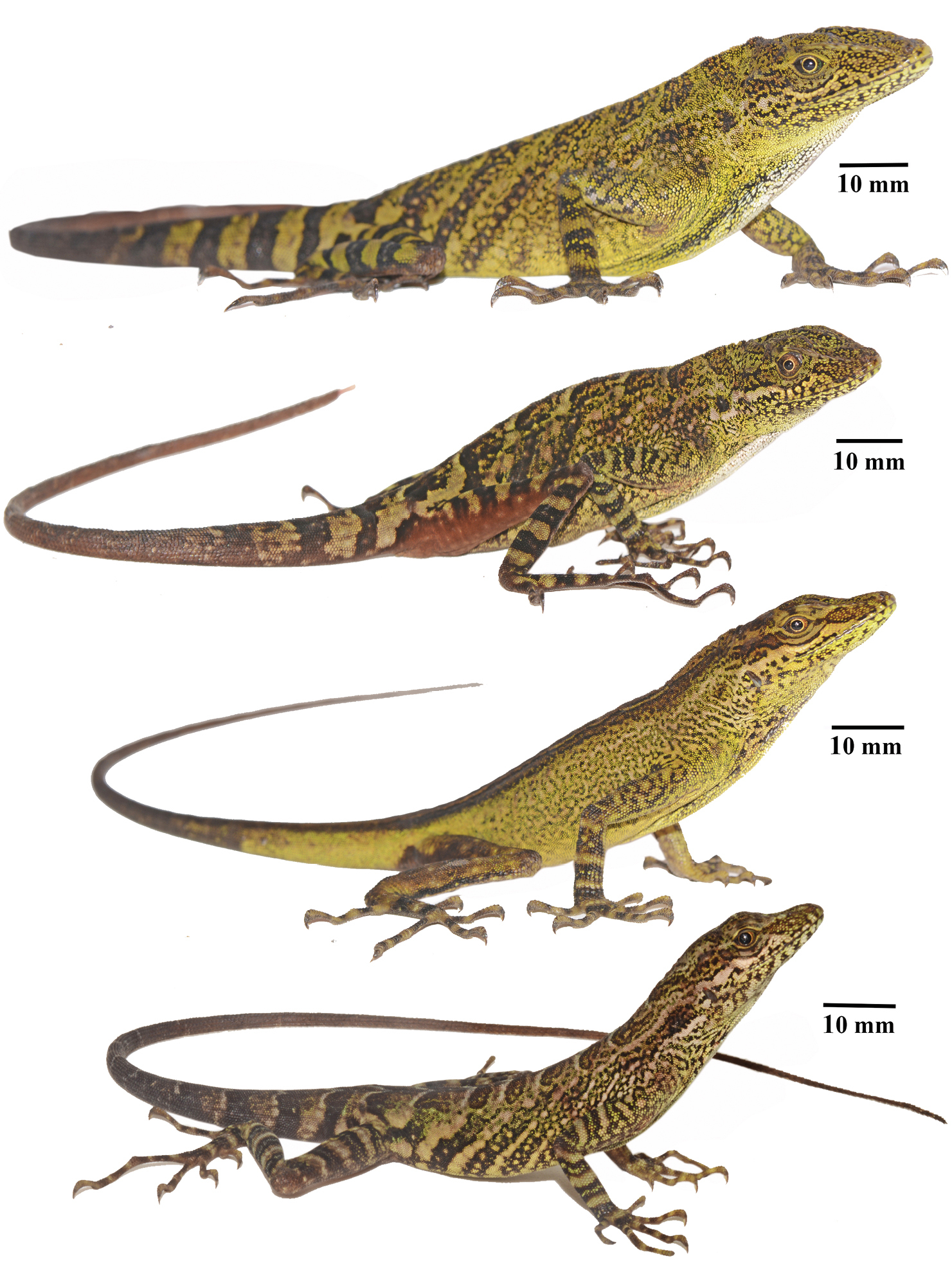
In a recent review of old literature for some projects on Cyclura iguanas, I came across some notes from Gosse (1848) in which he speculates upon the nature of the lizard dewlap. I think it is fun and fascinating to think about how naturalists approached the idea of deducing what functions these structures might have served! In this narrative about Jamaican lizards, Gosse rather breathlessly describes some exciting correspondence he received from his friend Richard Hill, Esq., of Spanish-Town Jamaica, adjacent to Kingston on the southeast coast:
Hill: “The gular pouch which hangs like the dewlap of a bull beneath its throat can be inflated*. but it is not exactly known under what circumstances, ordinarily, it has recourse to this power of inflation. When filled with air it would give breadth and buoyancy to the body, and if its habits are as aquatic as some accounts make them [those of Iguana proper] to be, it would afford to an herbivorous animal no unimportant aid while swimming and cropping its flowery food.”
Gosse: “*I believe my friend has fallen into a common error here. If I may judge from analogy in the genera Anolis and Dactyloa, the gular pouch in the Iguanidae is extensible but not inflatable, as I hope to show in a future paper on the habits of these genera.”
So, naturalists at the time speculated that the lizard dewlap might be a flotation device! Perhaps a natural explanation for species that readily take to water when they flee, such as Iguana iguana, but potentially applying across lizards with that feature. Gosse has already decided that Anolis dewlaps did not suit this purpose and thus that this seemed less likely for other iguanas as well, but he tees us up for the eventual settling of this issue of inflatable dewlaps.
Gosse continues:
“The notion expressed about the inflation of the gular pouch was the consequence of seeing two very large Iguanas from Cuba, which distended this appendage, and let it collapse again. The skin of these animals hung about them, as if they had been fat, and were, at the time I saw them, emaciated.”
Here Gosse is throwing cold water on this idea again, but you can tell from reading the text relating this correspondence that he must have relished the opportunity to receive such intelligence from the field and then have the opportunity to discuss and evaluate it!
Mr. Hill continues:
“When excited it assumes a menacing attitude, and directs its eye to the object of attack with a peculiarly sinister look. At this time it inflates the throat, erects the crest and dentelations on the back, and opens the mouth, showing the line of those peculiarly-set white teeth, with serrated edges, so excellently made to illustrate the remains of the gigantic fossil Iguanodon. The principle of their construction is so precisely similar, as to leave no doubt of the genuine connection of the extinct with the existing herbivorous lizard. The adaptation of both is for the cropping and cutting of vegetable food.”
Here, just to draw attention to this rather remarkable fact, is an amateur naturalist (although, to be fair, advanced formal training in biology was not available during this time and naturalists were largely self-taught) who in 1847 is pronouncing upon the use of this dewlaps, while also simultaneously acknowledging extinction, evolutionary similarity, and adaptation. We often talk about these latter notions as having crystallized after Charles Darwin and Sir Richard Owen brought ideas regarding natural selection (and adaption) and extinction, respectively, into the mid-19th Century Victorian intellectual milieu. But Cuvier and others had proposed robust examples of extinction at the turn of the 19th Century, and millenia of ideas, dating back to Hellenistic Scholars, through the Golden Age of Islamic Scholarship, to the parlors of Renaissance Europe had proposed that some traits proved “favorable.” Further, Iguanodon was discovered in 1822 by Gideon Mantell (not, famously, by Cuvier and Owen). So, such ideas were available to progressively-minded naturalists of the time, and it is refreshing to see such a confirmation in print!
NB: Just to further tempt you to take a dive into this literature, this is also the issue where Sir Richard Owen describes the Moa birds from New Zealand! What epic rainy-day reading! Check out the link to the issue, I recommend it!
With thanks to Ari Miller (WUSTL, Losos Lab) for pointing me toward this reference.
Article:
Gosse, P.H. 1848. On the habits of Cyclura lophoma, an iguaniform lizard. Proceedings of the Zoological Society of London 99–104.
Link: https://archive.org/details/lietuvostsrmoksl48liet/page/n137/mode/2up



















